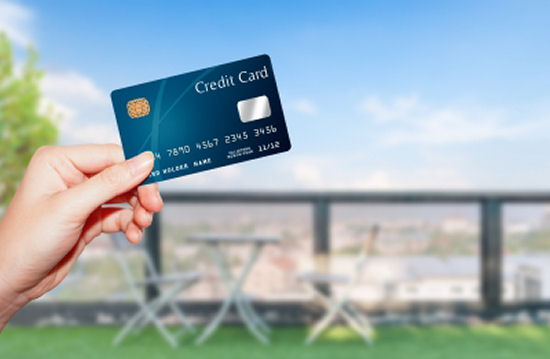Today, we’re diving into a topic that resonates with nearly everyone who’s ever owned a wallet – credit cards.
On one hand, they’re incredibly convenient, a lifeline in emergencies, and even rewarding at times. But on the flip side, they can be a fast track to mounting debt and financial stress, especially when not used wisely.
Did you know that, as of recent statistics, an average American household carries thousands in credit card debt? That’s a staggering figure, and it’s growing.
It’s clear that while credit cards offer convenience, they also demand responsibility. It’s not just about avoiding debt; it’s about mastering the art of saving money through smart credit card use.
In this post, we’ll explore 10 practical ways to save money on your credit card expenses. These aren’t just tips; they’re strategies that I’ve learned, sometimes the hard way, and have shared with countless clients during my career in personal finance. So, whether you’re trying to climb out of debt, or you’re just looking to optimize your financial health, there’s something here for you.
1. Get to Know Your Credit Card Terms
Step into any credit card agreement, and you’re likely to be met with a barrage of financial jargon that can leave your head spinning. APR, annual fees, grace periods – these terms are not just fine print; they’re the keys to unlocking the potential of your credit card without falling into the trap of unnecessary expenses.
First things first, let’s talk about the Annual Percentage Rate (APR). It’s basically the cost of borrowing money on your card. If you carry a balance, a lower APR means you’ll pay less over time. But beware, APRs can be tricky – some are fixed, some are variable, and they can differ significantly between purchases, cash advances, and balance transfers.
Now, onto annual fees. Some cards charge them; others don’t. The trick is to weigh the benefits of the card against its fees. For instance, a card with a high annual fee might make sense if it offers rewards and benefits that outweigh the cost.
And then there’s the grace period – a window of time where you’re not charged interest on purchases, provided you pay your balance in full by the due date. This period can be your best friend in avoiding interest charges.
Understanding these terms is crucial in choosing the right credit card and using it to your advantage. Don’t just accept the first offer that comes your way. Shop around, compare, and remember: the best credit card is the one that aligns with your financial habits and goals.
2. Leveraging Balance Transfer Offers
Let’s tackle one of the most talked-about features in the credit card world: balance transfers. Picture this: you’re carrying a balance on a credit card with a high-interest rate. It feels like you’re in a boat with a small leak; no matter how much you bail, you’re still taking on water. That’s where a balance transfer can be a lifesaver.
A balance transfer involves moving your existing credit card balance to another card, typically one with a lower or even 0% introductory APR. It’s like putting a patch on that leak. For a set period, usually 12 to 18 months, you get a break from high interest rates, which means more of your payment goes towards reducing the principal balance. This can be a fantastic way to fast-track your debt repayment.
However, keep your eyes open for balance transfer fees. These are typically 3-5% of the transferred amount. Do the math to ensure the fee doesn’t offset your interest savings. Also, be wary of the end of the introductory period. When it expires, the APR can jump significantly, so have a plan to pay off as much as you can before that happens.
Remember, a balance transfer card is a tool for debt reduction, not an invitation to accrue more debt. Use this strategy wisely, and it can be a powerful step towards financial freedom.
3. Utilizing Rewards and Cash Back
Rewards and cash back programs can be like finding money in your old jacket pocket – a pleasant surprise if used correctly. These programs are designed to reward you for your spending, but the key is to use them strategically.
First, understand the types of rewards programs available. Some offer points that can be redeemed for travel, merchandise, or gift cards, while others offer cash back on purchases. Some cards offer higher rewards rates on specific categories like groceries, dining, or gas, which can be lucrative if they align with your regular spending.
Here’s the golden rule: never spend more just to earn rewards. It defeats the purpose if you’re racking up charges you can’t afford. Also, be aware of any caps on rewards and the expiration of points.
To maximize your rewards, use your credit card for regular, budgeted purchases and pay off the balance each month. This way, you’re not paying interest, and you’re accumulating rewards on spending you would do anyway.
Additionally, some cards offer sign-up bonuses, which can be a hefty lump sum of points or cash back if you meet a spending threshold in the first few months. If you’re planning a big purchase, timing it with a new credit card sign-up can be a smart move.
In essence, if you’re disciplined with your spending and payments, rewards and cash back cards can be a little bit like getting a discount on everything you buy. Who doesn’t love a good deal?
4. Avoiding Late Payment Fees
Late payment fees are like little financial gremlins that can sneak up on you and take a bite out of your wallet. Not only do these fees add unnecessary costs, but habitual late payments can also hurt your credit score. Let’s talk about how to avoid them.
First, understanding the consequences is key. A late payment fee can range anywhere from $25 to $40, and if you’re late frequently, this can add up quickly. Moreover, late payments can lead to penalty APRs, which are much higher than your regular APR.
The solution? Automate, automate, automate. Setting up automatic payments for at least the minimum amount due is a failsafe way to avoid late fees. You can always pay more later, but automating ensures you never miss the basic payment.
If you’re more hands-on or worried about overdrawing your account, setting calendar reminders a few days before your due date can also work wonders. Some credit card companies even offer email or text reminders, which can be a helpful nudge.
If you do slip up and face a late fee, don’t hesitate to call your credit card issuer. If you have a good history of timely payments, they might be willing to waive the fee as a one-time courtesy.
5. Reducing Credit Card Interest
Paying high interest on your credit cards is like running a race with a heavy backpack – it slows down your financial progress. Reducing your credit card interest isn’t just about saving money; it’s about paying off your debt faster.
The first step is to know your current APR. This information is typically found on your statement or online account. If it’s higher than average and you have a good credit history, consider negotiating with your credit card company for a lower rate. It might seem daunting, but remember, it’s a business transaction, and it never hurts to ask.
Another approach is to look for a new credit card with a lower APR and transfer your balance (as discussed in Chapter 2). Be mindful of transfer fees, but sometimes the interest savings can make it worthwhile.
For those carrying balances on multiple cards, focus on paying off the card with the highest interest rate first while paying minimums on the others. This strategy, known as the avalanche method, can save you a significant amount in interest over time.
Lastly, consider consolidating your credit card debt with a personal loan. These loans often have lower interest rates than credit cards and can simplify your payments into one monthly installment.
Remember, the less you pay in interest, the more you can allocate towards reducing your principal balance. It’s like lightening that backpack so you can run your financial race with greater ease.
6. Budgeting to Control Credit Card Spending
Budgeting might not sound like the most exciting word in your financial vocabulary, but when it comes to credit card use, it’s your secret weapon. It’s all about using your credit card as a tool, not a crutch.
Start by understanding your spending patterns. What are you using your credit card for? Necessities, emergencies, or impulse buys? Categorize your spending and set a budget for each category. Budgeting apps can be a great aid here, helping you track where your money is going in real-time.
The next step is setting limits. Just because you have a credit limit of $10,000 doesn’t mean you should spend that much. Your credit card spending should fit comfortably within your overall budget, not stretch it.
A key part of this process is distinguishing between wants and needs. Sure, it’s okay to treat yourself occasionally, but habitual spending on non-essentials can quickly lead to a ballooning balance.
Lastly, remember that paying off your credit card balance in full each month is part of good budgeting. This practice helps you avoid interest charges and keeps your spending in check.
7. Paying More Than the Minimum Payment
Paying only the minimum payment on your credit card is like being on a financial treadmill – you’re moving, but you’re not getting anywhere fast. While it keeps you in good standing with your credit card company, it does little to decrease your overall balance.
Let’s break down the numbers. Credit card statements now include information on how long it will take to pay off your balance if only minimum payments are made, and the total amount you will end up paying. This eye-opening information can motivate you to pay more than the minimum.
Paying even a small amount above the minimum can make a significant difference. It reduces your principal balance faster, which in turn reduces the amount of interest you’ll pay over time. Think of it as an investment in your financial future.
If you find it challenging to pay more than the minimum, consider ways to reduce your expenses or increase your income. Even temporary sacrifices or side hustles can provide the extra cash needed to boost your credit card payments.
Remember, every extra dollar you pay towards your credit card debt is a step closer to financial freedom. It’s about changing your mindset from making minimum payments to maximizing your payments.
8. Avoiding Unnecessary Credit Card Fees
Navigating the maze of credit card fees can feel like a tricky game, but with a bit of knowledge, you can avoid unnecessary charges. These fees come in various forms – annual fees, cash advance fees, foreign transaction fees, and more. The trick is not just to be aware of them but to actively strategize to avoid them.
Annual fees can be a burden, especially if the benefits of the card don’t outweigh the cost. If you’re paying a hefty annual fee, reassess whether you’re truly getting your money’s worth in rewards or perks. Sometimes, a no-frills card with no annual fee can be the most cost-effective choice.
Cash advance fees are another pitfall. Withdrawing cash from your credit card is rarely a good idea as it comes with high fees and interest rates. Always look for alternative methods to access cash.
Foreign transaction fees can quickly add up if you travel abroad frequently or shop from international websites. Fortunately, many credit cards now offer no foreign transaction fees as a feature. If international transactions are a regular part of your life, consider getting one of these cards.
Lastly, read the fine print and stay informed. Credit card companies often change their fee structures, so keeping an eye on any updates to your credit card terms is crucial.
9. Keeping Track of Multiple Cards
In a world where having multiple credit cards is common, managing them effectively becomes an art. It’s not just about reaping the benefits of each card, but also about avoiding the pitfalls of mismanagement.
The first rule of thumb is not to bite off more than you can chew. Only open as many credit cards as you can keep track of. Missed payments or overspending can quickly negate any benefits earned from rewards or cashback.
Organizational tools are your best friend here. Use budgeting apps, spreadsheets, or even simple calendar reminders to keep track of payment due dates, billing cycles, and rewards programs. Some people find it helpful to label their cards with a note reminding them which card is best for which type of purchase.
If you’re juggling multiple cards, consider setting up automatic payments for at least the minimum amount due on each. This ensures you never miss a payment and helps protect your credit score.
Remember, each credit card should have a purpose – whether it’s earning rewards, financing a large purchase, or providing emergency backup. Use each card in a way that aligns with your financial goals and budget.
10. Regularly Reviewing Your Credit Card Statements
Regularly reviewing your credit card statements is like being a detective in your own financial mystery. It’s not just about tracking your spending, but also about catching errors, fraud, and understanding your financial habits.
First and foremost, checking your statements helps you spot unauthorized charges or billing errors. The sooner you catch these, the easier it is to dispute them with your credit card issuer. Remember, your vigilance is a key line of defense against identity theft and fraud.
Your statement is also a treasure trove of insights into your spending habits. It can help you identify areas where you may be overspending or reveal patterns that you weren’t aware of. This understanding is crucial for refining your budget and financial strategies.
Additionally, regular reviews ensure you’re aware of any changes in interest rates, fees, or credit limits. Credit card issuers sometimes alter terms, and staying informed helps you make timely decisions about your credit card use.
Finally, make this a monthly habit. Set aside a specific time each month to go through your statements. This disciplined approach not only keeps your finances in check but also brings peace of mind.
Conclusion
From understanding your credit card terms to leveraging rewards and avoiding fees, each of these ten strategies is a step towards more mindful and effective credit card use. Remember, the goal is not just to save money but to build a foundation of healthy financial habits.
As you apply these tips, you’ll find that you’re not just reducing costs, but also gaining control over your financial life. This empowerment is the true reward, far beyond any cashback or points.

Photo credit: pannawat at FreeDigitalPhotos.net

